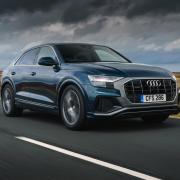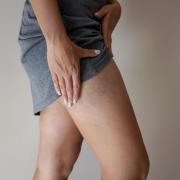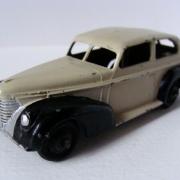HEAD: Food for thought
STANDFIRST: How to tell if your dog is overweight or if your pooch needs to go on a diet
BYLINE: Words: Polly Angelova
We all love a treat and dogs are no different, but when it comes to food scraps and even special doggy treats sometimes there’s such a thing as too much kindness. Just like with humans, the main risk of being overweight isn’t aesthetic, but rather health related.
RSPCA chief veterinary officer Caroline Allen says, ‘Pet obesity is a serious welfare issue and recent studies have suggested that around half of all pet dogs are overweight. We are, quite literally, killing our pets with kindness.
‘Overweight pets can suffer from serious health problems such as heart disease and diabetes,’ she adds. ‘Carrying more body weight can also increase the chances of pets suffering from conditions such as arthritis and can even shorten their life expectancy.’
Here are some warning signs that your furry friend might need a lifestyle change:
Watch the ribs
The first thing all dog health experts recommend is checking your dog’s ribcage. Regardless of their breed, and how short you keep their fur, you should be able to clearly feel all the ribs, unobstructed by excess fat. If you find yourself having to press hard, your pup might not be as fit as you think.
For best results, start with your thumbs at your dog’s spine, and gently but firmly splay your hands over their ribs. The ribcage should feel similar to the back of a human hand.
Examine the profile
Another easy way to determine whether your pooch is packing a few extra pounds is to have a good look at them from all angles. As a rule, the chest of your dog should be wider than their abdomen and tuck up when it reaches the stomach area. If the pup has no visible waist, or the chest and stomach blend into one, they might be on the chubby side.
Rather than being oval and sagging, the waist of a healthy canine should be slightly raised when viewed from the side. Lower yourself to your dog’s eye level and look for a gentle slope from their ribcage which gradually sweeps up toward their butt. If that curve is too small or non-existent, your furry friend needs to lay off the biscuits.
Occasionally, you might also be able to judge a pup’s weight by their jiggle. If their stomach swings, or they have excess fat between their legs which waddles when they prance, they are overweight. You should also inspect your dog’s hips for fat pads, as those are a definite warning sign.
Another great way to determine whether your dog’s waist is the right size is by standing in front of their face and looking down. When viewed from this angle, fit canines would resemble an hourglass in shape, with their waist tucked in behind the ribs. If their whole body follows a straight line – or worse, bulges out past the ribs, your pup is podgy.
Monitor the behaviour
A dog's looks are not the only clue to their fitness. Keep a close eye on their daily activities, as any changes in behaviour can also be a tip-off for unhealthy weight. Troublesome shifts in energy and endurance can include constant panting or wheezing – especially when walking around – as well as reduced speed, and getting winded from minimal exertion, like greeting you at the front door.
In many cases, overweight dogs would also play less than normal, or abandon games altogether in favour for more naps. Chubby pooches would also struggle to move about, especially when it comes to getting comfortable sitting or lying down, as well as climbing onto the sofa, into the backseat of your car, or up the stairs in your house.
If you spot any of these signs with your pup, you should seek individual advice from your vet, but as a rule of thumb introducing more exercise and changing your dog’s diet to a healthier brand are a good place to start.
Healthy dog food brands to try
Burns Pet Food
Launched in 1993 by veterinary surgeon John Burns. Using recipes developed by John himself, the Burns range steers clear of beef, wheat, and dairy as the most common allergens, and caters to various specialist diets.
burnspet.co.uk
Harringtons
Enriched with a series of vitamins, minerals, and probiotics, Harringtons pet food is designed to support your dog’s digestion and boost their immunity. Recipes are tailored to different breeds and cooked using freshly prepared meat for optimal flavour.
harringtonspetfood.com
Pooch & Mutt
This food range has been developed in partnership with some of the UK’s top nutritionists, replacing additives with positive nutrition elements such as supplements and nutraceuticals.
poochandmutt.co.uk
Tails
Tails starts you off with a quiz designed to assess the dietary needs of your furry friend and then offers personalised dog food suggestions, considering health concerns as well as your dog’s eating habits.
tails.com/gb
Butternut Box
Butternut Box offers each pup a tailor-made menu of meals based on their weight, age, breed, and activity levels. All dishes are freshly prepared and frozen to lock in the nutrients, before they get shipped off to your door.
butternutbox.com


























